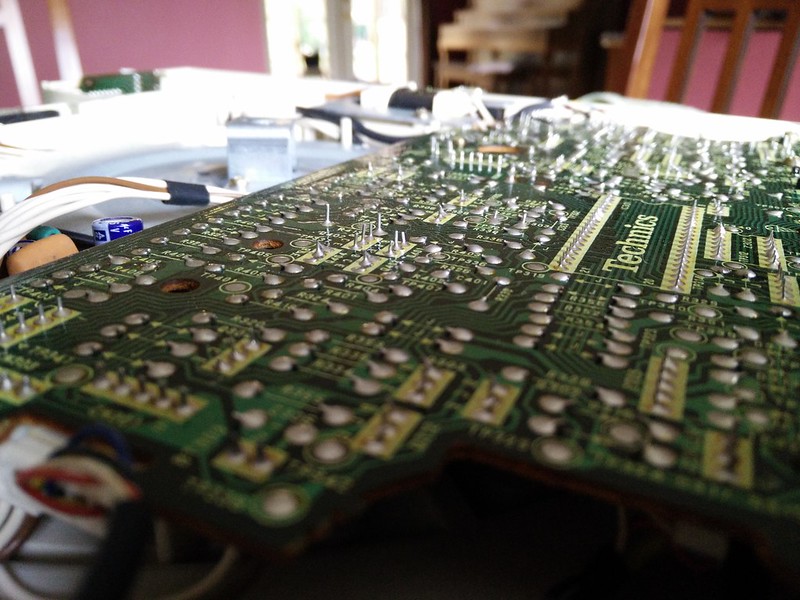So, I picked up a slightly sad Technics SL-6 turntable off ebay. It was my post-move treat. A new turntable to replace the two that I’d sold in the UK. As we left I’d been prodding at the idea of a linear tracking turntable, just because it was interesting conceptually. Then I discovered these entertainingly technology based “Oh god, CDs are going to kill us” automatic turntables, slot loading, programmable, sometimes play both sides (and probably dance for you) ridiculotrons. And I thought, that’d be fun. After a period of questing for such a beast I gave in, I couldn’t get a slot-loading linear-tracking turntable at a price I was willing to pay.
Especially since I can’t quite decide if it’s a novelty item, and given my past history of DJing and clubbing, (and my crappy hearing thereby obtained) I probably couldn’t really tell the difference between a really good linear tracker and a 1970s BSR deck in a stereogram.
But I did find a slightly foxed SL-6. And it said the speed was very variable, but otherwise it worked. But handily there are many people who’ve fixed record decks, so I broke out google and found that the Vinyl Engine had the service manual and the youtubes had the ‘look, just clean the switches and variable resistors and it will all be well’. And I decided that I should have the slightly foxed SL6. And it did arrive.
And so I went to Rainy Day Records and raided their 98¢ bin and came back with totally inappropriate records to speed check a deck (Bob Newhart, Allan Sherman and Tom Lehrer), but at least I could see it working.
And the deck did come without a plattermat, so I ebayed a second hand platter mat. And everything was here. And I realised that I was a fool, because the SL-6 has a built in 45 adaptor, and the plattermat did not. But I test assembled it, placed the record on the turntable and off it went. Played, selected tracks, but wow was it wowy. Well, it probably was, because I’d not hooked it up to the amplifier. But even to the naked eye the speed variation was visible.
So today I headed off to get some sewing machine oil, that being the conveniently available record-deck-oil replacement, especially in Oly which seems to be devoid of electronics shops. I had already completed the quest to get some switch cleaner (car shops, they sell switch cleaner).
And then I stripped it down, at least a bit. After an epic battle with the turntable platter I managed to get it off (wiggle it, that’s the key). The center spindle was, indeed, a bit graunchy. Then off came the base.
And out came the main board, and to work I went cleaning contacts.
When I was satisfied I reassembled it, gave the outside a clean, trimmed the plattermat to fit and turned it on. A quick visual check revealed that it seemed to be spinning at a more consistent rate. On with the record.
Swoosh-shhhuk….swoosh-shhhuk….swoosh-shhhuk….swoosh-shhhuk….swoosh-shhhuk….swoosh-shhhuk
And the record seemed to be slowing again at points.
And then I realised.
The random cheap used plattermat? It’s about 0.2mm too thick. It causes the record to foul a piece of the case.
Still, with that removed I could at least test it. Only…
Whilst our house-stilling house has an amplifier with a phono input, it’s not actually connected to any speakers, because they don’t use that amplifier anymore.
…and whilst I have speakers, I don’t have any cables to connect them, because they were built into the walls in our house in Bristol.
Gaaah*.
* Obviously, I also still need to buy it a new stylus too, but that can wait until I can actually hear it and check it’s actually working okay and has no other hideous hideous problems.
